| Botanical Name |
|
| Family |
Aloeaceae - The aloe family. |
| Pronunciation |
|
| Common Name(s) |
Afrikaans: Spaansaalwyn; Slaphoring-aalwyn
|
| Plant Group |
- Succulent A plant having fleshy stems or leaves often adapted to dry conditions.
|
| Plant Size |
- Very large
| Tree | Over 25m |
| Shrub | Over 4m |
| Perennial/ground cover | Over 1m |
| Bulb | Over 1.2m |
| Succulent | 1.5m to 2m |
|
| Position |
- Sun The area is in full sun for all or most of the day, all year round.
|
| General Information |
- Drought Tolerance: High The plant is well adapted to arid conditions; it can survive long periods of drought and high temperatures without extra water.
- Evergreen Plants that have leaves all year round.
- Frost: Tender A plant that will not survive any frost or low winter temperatures.
- Water Wise Plant species originating from low rainfall regions that require less water to survive and thrive than other plant species.
- Wind Tolerant Plants able to withstand the effect of strong winds.
|
| Specific Information |
Aloe speciosa is a tall, erect aloe reaching from 3 to 6 m tall. The bluish green leaves, arranged in dense rosette, are long and narrow and droop slightly. The leaf margins are armed with small red teeth. When water is scarce the leaves may be tinged with pink.The head of the rosette of leaves is almost always tilted to one side, either towards the north or towards the direction from which it receives most light, making it easy to distinguish from other tall-stemmed aloes.
|
| Ad Break |
|
| Flowers |
| Description |
a raceme (flower stem) with densely packed flowers, up to 500 mm long
|
| Season |
- Winter to Spring Plants will seldom bloom for the entire season as given in the list, but should flower during a period within these parameters.
|
| Colour |
|
| Growth Rate |
- Slow to Moderate Specifying growth rate can be very misleading as there is considerable variation of growth rate depending on type and species of plant, available water, supplementary feeding, mulching and general care, as well as the plants suitability and adaptability to the garden environment.
|
| Plant Uses |
- Accent or Focal Point A plant used to attract the attention because of its colour or form.
- Attracts bees, butterflies or other insects This plant attracts insects which can be food for birds or other creatures in your garden.
- Attracts Birds This plant will attract birds.
- Boundary A plant useful for planting around the edges of the property to form a green or colourful backdrop, an impenetrable hedge, to hide walls or create privacy.
- Rock Garden An area constructed of larger rocks, arranged naturally, to emphasise the use of stones as a main element. Generally plants used do not need a lot of care.
- Suitable for coastal gardens Plants adapted to dry, sandy soil, forceful wind, limited rainfall and intense sunlight.
- Wild Garden An indigenous garden planted for the benefit of wildlife and birds. Provides food, water, a variety of mini-biomes and no poisonous chemicals are used.
|
| Distribution and Habitat |
from Swellendam in the Western Cape to the Kei River in the Eastern Cape, in dry river valleys, on mountain slopes and on flat areas, mainly in the Albany Thicket Biome
|
| Planting Suggestions |
Although not particularly fussy, Aloe speciosa grows best in fertile, well-drained, sandy loam soil to which some bone-meal has been added. Mulch well once a year with compost. If given every opportunity to become strongly established, Aloe speciosa will need very little attention.
|
| Medicinal Uses |
|
| Ad Break |
|


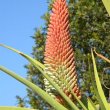
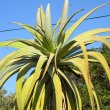
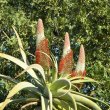
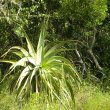
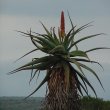


Discuss this plant
Share knowledge, ask a question or give an experience.